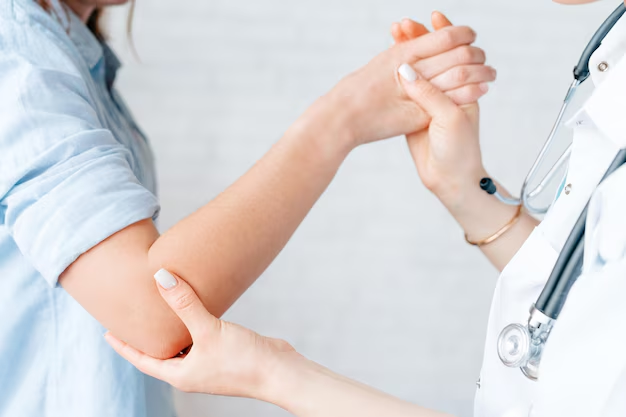Decoding the Tuberculosis Test: What You Need to Know
Tuberculosis (TB) remains one of the world's most persistent and serious infectious diseases. Screening for it can sometimes become a puzzle, especially for those unfamiliar with interpreting TB skin tests. But don’t worry! This guide will help demystify the process for you, explaining what you should expect and how to interpret the results.
Understanding TB and Its Significance
What is Tuberculosis?
TB is a bacterial infection caused by Mycobacterium tuberculosis, usually attacking the lungs but capable of affecting other parts of the body. It is highly contagious and spreads through the air when an infected person coughs or sneezes. While TB can be deadly, it is both preventable and treatable.
Why is TB Testing Important?
Early detection of TB can prevent transmission and lead to more effective treatment outcomes. Screening is vital, especially for individuals at high risk, such as those with weakened immune systems, healthcare workers, and individuals who have been in close contact with someone with active TB.
The TB Skin Test: The Basics
What is a TB Skin Test?
Also known as the Mantoux tuberculin skin test (TST), this procedure involves injecting a small amount of purified protein derivative (PPD) into the skin of your forearm. The test aims to determine if your immune system reacts to the bacteria that cause TB.
Preparing for the Test
- Understand the purpose: Knowing why you’re being tested can provide valuable context and reduce anxiety.
- Discuss medical history: Inform your healthcare provider about any history of TB or other medical conditions; some conditions may affect the results.
- No prior TB vaccine: Share if you have received the Bacillus Calmette-Guérin (BCG) vaccine, which might cause a false-positive result.
How to Read the Tuberculosis Test
Step-by-Step Guide
Observation Timeframe: Avoid touching, scratching, or pressing the test site. Return to your healthcare provider 48 to 72 hours after the test for a professional evaluation.
Measuring the Induration: A healthcare professional will measure the induration (raised, hard area) in millimeters. Note, they are not measuring the redness.
Understanding the Results:
Positive Result: Indicates a certain level of induration. The size that qualifies as positive can vary based on risk factors:
- 5 mm or more: Positive for people with recent TB contacts, HIV infection, or organ transplants.
- 10 mm or more: Positive for recent immigrants from high-prevalence countries, healthcare workers, or individuals in high-risk settings.
- 15 mm or more: Positive in people with no risk factors.
Negative Result: Typically signifies absence of TB infection in individuals without obvious symptoms.
False Positives/Negatives: Reactions can vary based on previous BCG vaccinations, other bacterial infections, or poor administration technique.
Next Steps After Reading the Test
Once your test results are in, your healthcare provider may recommend further evaluation or treatment based on the findings. If your test is positive, additional assessments such as a chest X-ray or sputum test may be necessary to ascertain if you have active or latent TB.
Unwrapping the Complexities: The Blood Test Alternative
Understanding the Risks of False Results
In some scenarios, you might receive a false-positive or false-negative result. For example, vaccinations like BCG interfere with results, and some medical conditions may suppress the skin reaction.
Interferon Gamma Release Assay (IGRA)
If you're concerned about the test's accuracy, particularly after receiving a BCG vaccine, a TB blood test or IGRA might be a preferable alternative. This method checks for an immune response in the blood and does not depend on skin reactions.
Practical Considerations Surrounding TB Testing
Who Should Get Tested?
- Individuals with Symptoms: People showing symptoms such as a persistent cough, night sweats, and unexplained weight loss.
- High-Risk Groups: Healthcare workers, individuals in congregate settings like prisons, and people from countries with high TB incidence.
- Immune-Compromised Individuals: Those with weakened immune defenses, including people living with HIV.
Preparing for Post-Test Scenarios
- Boxing the Myths: A positive TB skin test does not necessarily mean one has active tuberculosis; additional tests are necessary.
- Communicating with Employers: If your job mandates TB testing, remain open about your results with your employer while maintaining privacy regarding medical details.
- Insurance and Costs: Be aware of TB testing costs and discuss with your insurance provider if tests like IGRA are covered.
Wrap-Up: Empowering Yourself with Knowledge
By now, you have a broader understanding of how to process a tuberculosis test. Whether preparing for the procedure or interpreting results, maintaining clear communication with your healthcare provider is crucial. Armed with knowledge, you're better positioned to tackle TB testing confidently.
Quick Takeaways for your TB Test Journey:
- Find out your need based on risk factors like environment and immune status.
- Observe the site but let a professional measure it for accuracy.
- Understand the results based on induration size and personal risk profile.
- Consider alternatives if you’ve had the BCG vaccine, such as the IGRA.
- Discuss further steps with your healthcare provider post-testing. 😊
Let’s keep learning and stay informed. Your health is invaluable, and knowledge is your most potent ally in protecting it!
